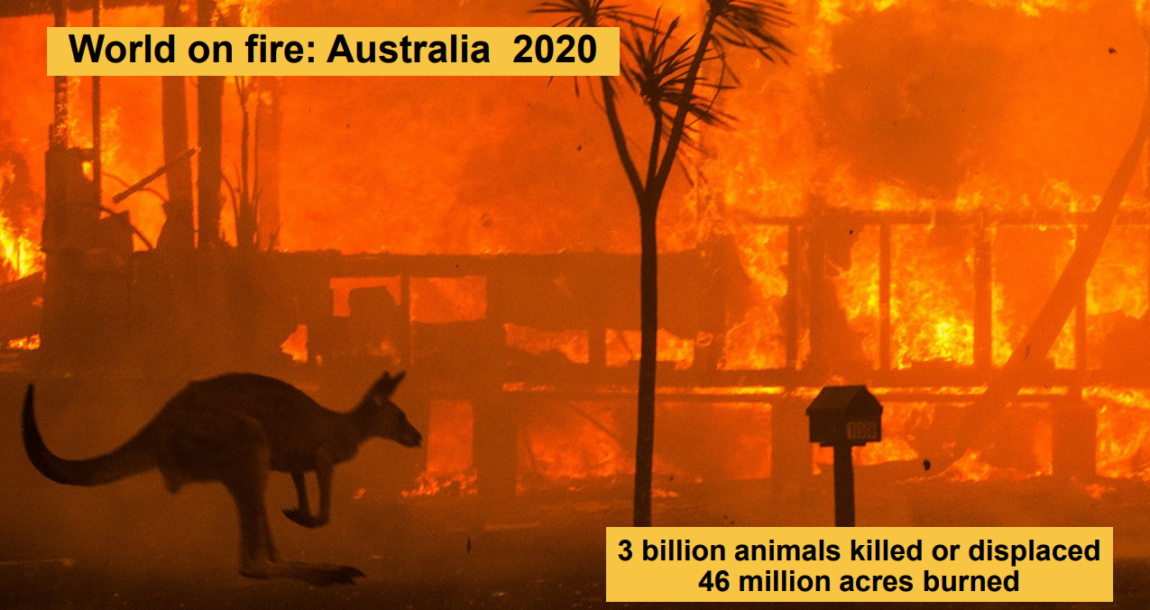Climate ‘flickers’ warn of devastation to come, expert tells state regulators

Canadian wildfires polluted New York City air for days. Maui wildfire deaths are well over 100 and rising. Phoenix recorded 31 straight days of 110-degree temperatures, smashing the 49-year-old record of 18.
Climate emergencies are happening in places they rarely ever happened before. And it's no coincidence, said Peter Schlosser, vice president and vice provost of global futures and director, Julie Ann Wrigley Global Futures Laboratory at Arizona State University.
"We do know from complex systems, and the climate system is a complex system, that when it moves from one state to another, it starts to flicker," Schlosser explained. "What we are seeing in extremes are these flickers."
Schlosser presented climate data, findings and predictions last week during a Climate and Resiliency Task Force at the National Association of Insurance Commissioners' summer meeting in Seattle.
Climate change events are costing insurers heavy losses in many states, leading some to pull out of specific markets.
Florida’s state-run property insurer warned recently that Hurricane Ian had “significantly depleted” its reserves and that it might impose a surcharge on millions of policyholders in the state if another major hurricane generates massive claims.
Farmers Insurance pulled out of some home policies in Florida, affecting 100,000 policyholders. And State Farm and Allstate said it would withdraw from California markets citing the high risks, and costs, of devastating climate disasters.
Climate-related insurance concerns
There is a mounting concern about whether insurance will remain available as climate-related events grow more intense.
In a July meeting of the Financial Stability Oversight Council, its chairwoman, Treasury Secretary Janet Yellen, warned of a “protection gap” for Americans trying to buy insurance against property losses from climate-related disasters, and said just 60% of the $165 billion in economic losses from extreme weather were covered by insurance last year.
Insurers questioned Yellen's data, pointing out that insurers paid a record $275 billion in natural catastrophes losses over the last three years, the highest ever three-year total for U.S. insurers, according to Aon.
A new report released last month by the Ceres Accelerator for Sustainable Capital Markets and the California Department of Insurance found that insurance companies are pursuing a wide variety of strategies to manage the increasing risks related to climate change.
The report -- the Climate Risk Management in the U.S. Insurance Sector: An Analysis of Climate Risk Disclosure -- is the first comprehensive review of U.S. insurers’ climate risk strategies. The findings come from nearly 500 publicly available insurance company responses to the NAIC’s 2021 Climate Risk Disclosure Survey.
This year, 27 states are participating in the NAIC Climate Disclosure Survey, the largest participation ever. It covers 85% of the U.S. insurance market. The data is due by Aug. 31, the NAIC said.
"These indicators of the evolution of wildfires, of droughts, of other extremes should give us enough information to come to the conclusion that it is time to really look seriously into what we can do," Schlosser said, "including which role insurance can play in this domain of climate solutions."
Mounting climate issues
Simply put, global warming is the long-term heating of Earth's surface observed since the pre-industrial period [the late 19th century] due to human activities, primarily fossil fuel burning, which increases heat-trapping greenhouse gas levels in Earth's atmosphere.
At present, Earth is in the midst of a vicious loop, in which ever-warming temperatures melts greater amounts of ice, which causes temperatures to further rise. Not to mention unleashing powerful storms, tidal waves, droughts and wildfires.
There are times now, previously unheard of, when the entire surface of Greenland is melting, Schlosser said. If all of Greenland's ice melted, seas would rise 20 feet. If all of Antarctica's ice melted, seas would rise 200 feet, a catastrophic event that would wipe out many islands and populous coastal land masses.
Fortunately, it will take many decades for that to happen, Schlosser said. Best projections point to a 3 to 10 feet sea level rise by the end of the century.
"One thing that people don't often think about is that 90% of the goods we are exchanging globally are coming across the ocean," Schlosser explained. "By definition, all the infrastructure of ports is at sea level. So, if you imagine 3 to 10 feet of sea level rise along the port infrastructure, that is something that is really hard to imagine what that actually means as far as adjusting to it."
Senior Editor John Hilton covered business and other beats in more than 20 years of daily journalism. John may be reached at [email protected]. Follow him on Twitter @INNJohnH.
© Entire contents copyright 2023 by InsuranceNewsNet.com Inc. All rights reserved. No part of this article may be reprinted without the expressed written consent from InsuranceNewsNet.com.
InsuranceNewsNet Senior Editor John Hilton has covered business and other beats in more than 20 years of daily journalism. John may be reached at [email protected]. Follow him on Twitter @INNJohnH.





4 tactics for turning client referrals into introductions
Structuring life insurance premium finance when interest rates are high
Advisor News
- Empower CEO: stock market volatility ‘here to stay for a bit’
- Raven MacFarlane-Bradbrook: We need Medicaid more than billionaires need tax cuts
- Could in-plan annuities head up a new asset class?
- Social Security retroactive payments go out to more than 1M
- What you need to know to find success with women investors
More Advisor NewsAnnuity News
Health/Employee Benefits News
- Findings from School of Humanities and Social Sciences Broaden Understanding of Mental Health Diseases and Conditions (Migration and Depression Among Chinese Grandparents: Moderated Mediation Model of Social Support and Social Health Insurance): Mental Health Diseases and Conditions
- AM Best Affirms Credit Ratings of UnitedHealth Group Incorporated and Its Subsidiaries
- Medicaid reform bill heads to Senate
- Ask The Medicare Specialist
- House approves health care coverage for firefighters
More Health/Employee Benefits NewsLife Insurance News